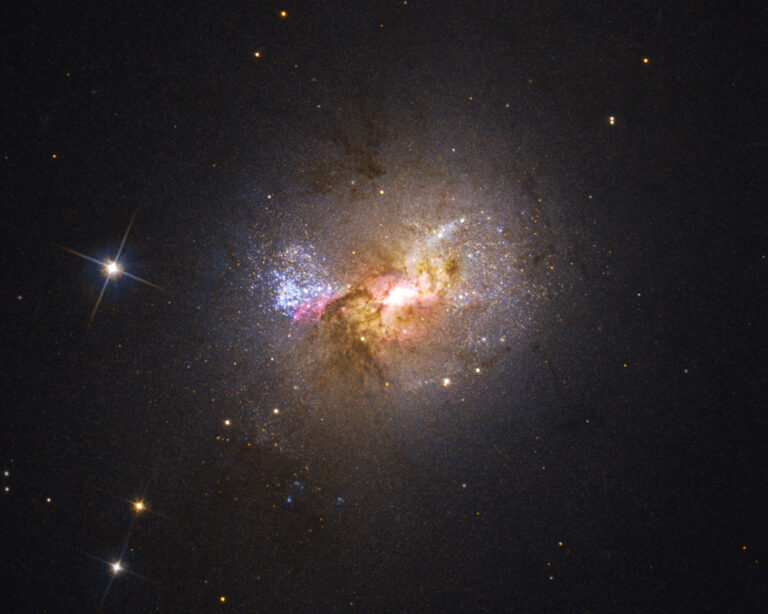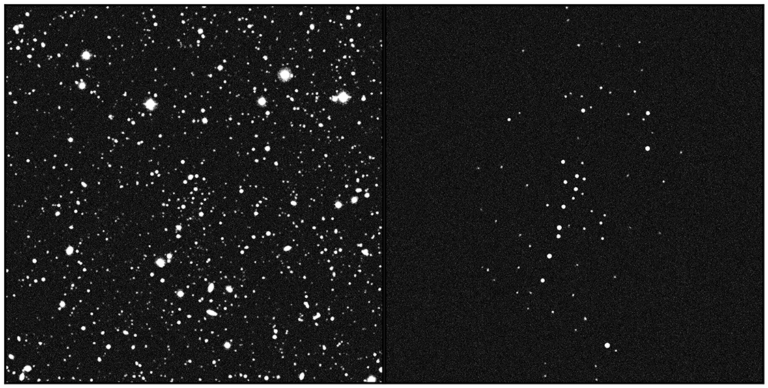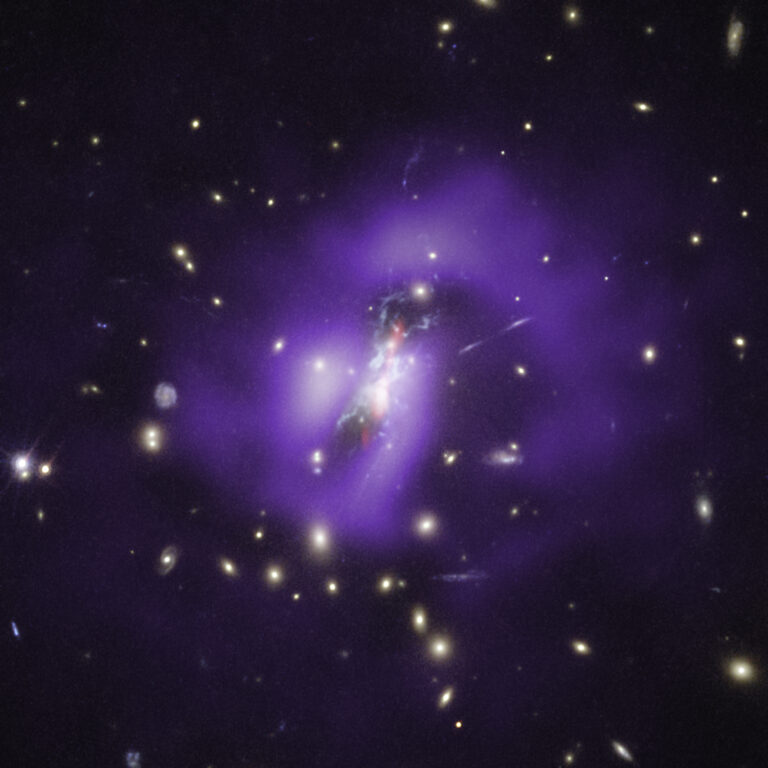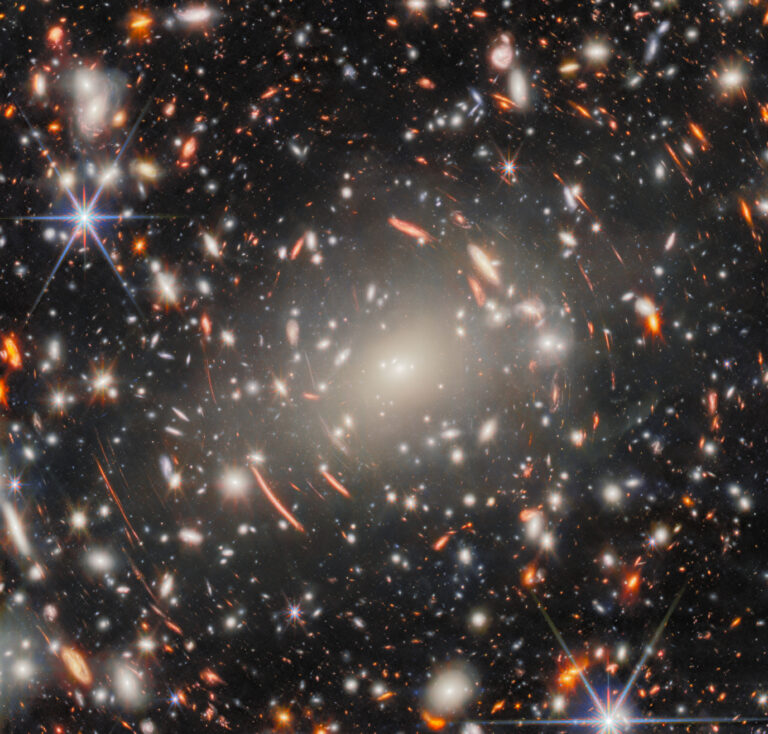Key Takeaways:
- The Andromeda galaxy's approach toward the Milky Way is confirmed by its blueshifted light, indicating a velocity of 68 miles per second (110 kilometers per second).
- Over the past 2.5 million years, Andromeda has moved approximately 900 light-years closer to the Milky Way, a relatively small distance compared to its overall size.
- Andromeda's velocity is not constant; gravitational attraction from the Milky Way causes acceleration, impacting collision predictions.
- Current projections estimate a galactic collision between Andromeda and the Milky Way in approximately 4 billion years, acknowledging uncertainties regarding Andromeda's precise trajectory.
Q:The Andromeda Galaxy is moving toward the Milky Way from 2.5 million light-years away. Today, we see it as it was 2.5 million years ago. Wouldn’t its actual position be 2.5 million light-years closer, and shouldn’t it be colliding with our galaxy now?
Bill Gerhold
Hewitt, New Jersey
A: Ever since we could measure the movement of Andromeda, we’ve known it was on a collision course with the Milky Way. Fortunately, a galaxy is much heftier than a photon, and it is not flying toward us at the speed of light, so we have a little more than 2.5 million years to prepare. To figure out how soon this collision will occur, first we have to figure out how fast Andromeda is moving. We do this by observing the galaxy and comparing what we expect to see from a galaxy at rest to what we actually see from Andromeda. Things moving away from us have light that is Doppler shifted toward the red end of the spectrum; things moving toward us have light shifted toward the blue.
Based on Doppler shifting of its light, Andromeda is speeding toward us at 68 miles per second (110 kilometers per second). Compare this to the light from Andromeda, which is moving toward us at 186,000 miles per second (300,000 km/s).
So how much closer to collision with Andromeda have we come in the past 2.5 million years? If we assume Andromeda has been moving at the same speed without accelerating, then in the last 2.5 million years, Andromeda has moved only 900 light-years closer to us. Considering that the galaxy itself is 110,000 light-years across (give or take; this number is continually being revised), this is a small but significant mosey.
But our assumption isn’t totally correct. As Andromeda gets closer, the gravitational attraction between it and the Milky Way gets stronger and Andromeda accelerates in our direction. On top of that, there’s one more factor we don’t know well: Is Andromeda headed straight for us, or is it aimed off to the side? Right now, we know that if there is any offset, it’s pretty small (less than the size of a pixel on the Hubble Space Telescope’s detector). However, even a small angle between Andromeda and the Milky Way will affect when and how the two galaxies collide, which stars will be flung out of the galaxies, and which will stay in. Think about playing golf or baseball or tennis — the movement of the ball changes when you don’t hit it head on.
Unless something radically changes Andromeda’s course, current estimates say that we’re only about 4 billion years from a catastrophic collision that will leave us inside a merged remnant of what was once two separate galaxies.
Valerie Mikles
National Oceanic and Atmospheric Administration Contractor,
Quality Assurance, I.M. Systems Group,
College Park, Maryland










